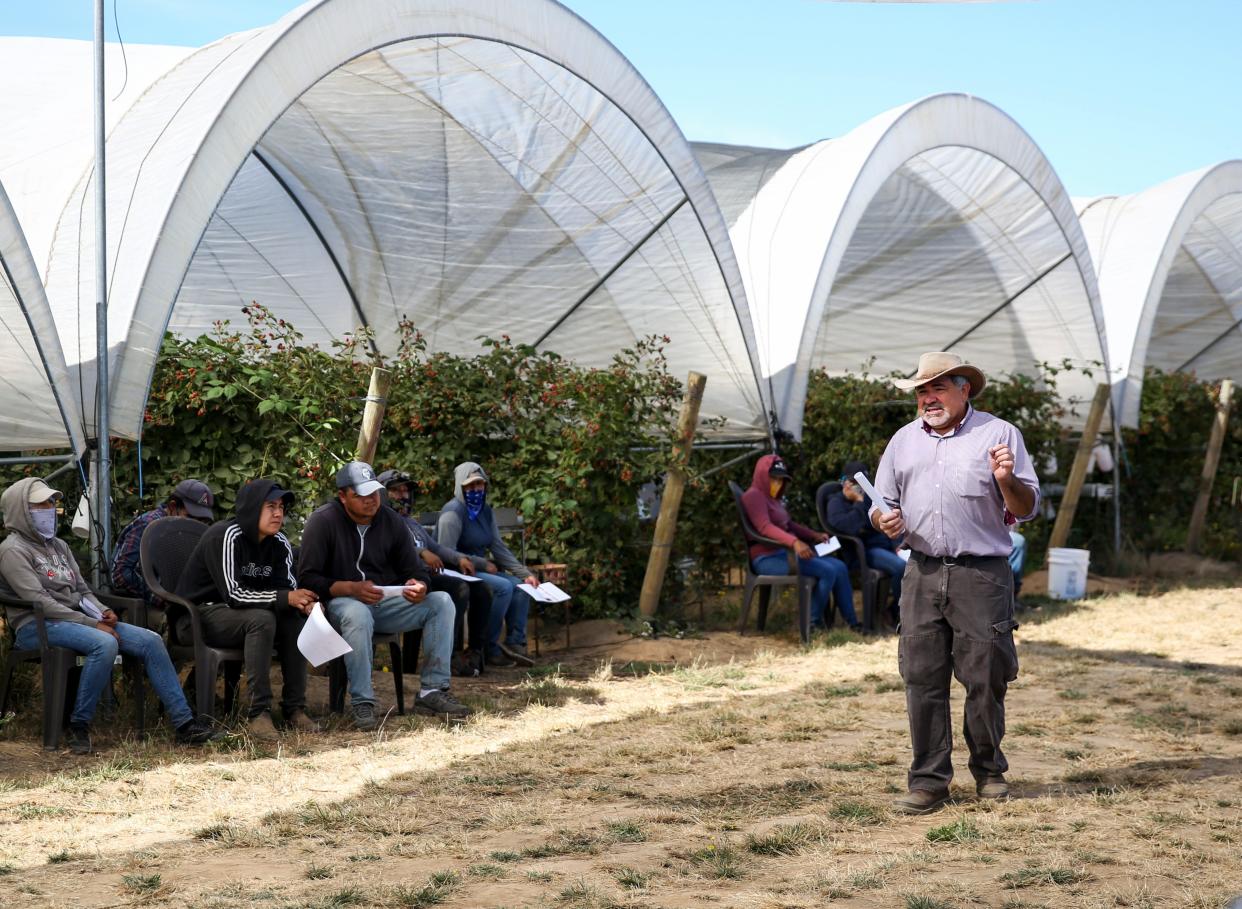Florida has banned required heat breaks for outdoor workers. Here's what Oregon law says

Florida has blocked local governments from requiring employers to provide heat breaks to outdoor workers or requiring other heat exposure provisions not already required by federal law.
Florida Gov. Ron DeSantis signed the ban into law in April despite the risk of extreme temperatures across the country. Last summer was Earth's hottest on record, according to NASA’s Goddard Institute of Space Studies.
DeSantis' signature also came after the 2023 summer heat led to the death of at least one farmworker in Florida: 29-year-old Efrain López Garcia.
In Oregon, a nursery worker died in 2021 while working in extreme heat. Sebastian Francisco Perez collapsed and died while working in temperatures that reached 104 degrees in the Willamette Valley.
Nursery worker's death spurs action on extreme heat in Oregon
After Perez died, then-Gov. Kate Brown directed the Oregon Occupational Safety and Health Division to adopt emergency rules expanding shade, rest time, and cool water requirements for employers during high and extreme heat events.
In 2021, state lawmakers allocated $10 million toward the Oregon Worker Relief Coalition for farmworkers who missed work due to extreme heat or smoke. The 2024 Oregon Legislature did not allocate an additional $9 million the coalition had requested and the Climate Change Fund is currently not accepting new applications.
In 2022, Oregon OSHA adopted permanent rules to protect outdoor workers from extreme heat. The rules require mandatory breaks, shade, cold water and training when the heat index reaches 80 degrees Fahrenheit.
Employers are required to provide:
Access to 32 ounces of water per hour for each employee at all times
Access to immediate and close shade
Annual training around heat illness prevention
If the heat index reaches 90 degrees Fahrenheit, employers also must implement one of three written rest break schedules.
When the new rules were implemented, Oregon OSHA officials referred to them as the most protective in the United States.
Oregon Gov. Tina Kotek also signed Senate Bill 907, which went into effect Jan. 1, prohibiting employers from retaliating or discriminating against workers for refusing to do work that would expose them to serious hazards. While not specific to farmworkers, about 30 farmworkers provided testimony in support of the bill.
Learn more about Oregon heat rules
Frequently asked questions about heat illness prevention rules adopted in 2022 (English) (Spanish)
Factsheet of the key requirements of the OSHA rules (English) (Spanish)
Information about the two types of heat illnesses and tips to prevent them (English) (Spanish)
Dianne Lugo covers the Oregon Legislature and equity issues. Reach her at dlugo@statesmanjournal.com or on X @DianneLugo
This article originally appeared on Salem Statesman Journal: How Oregon's response to extreme heat differs from Florida's new law
